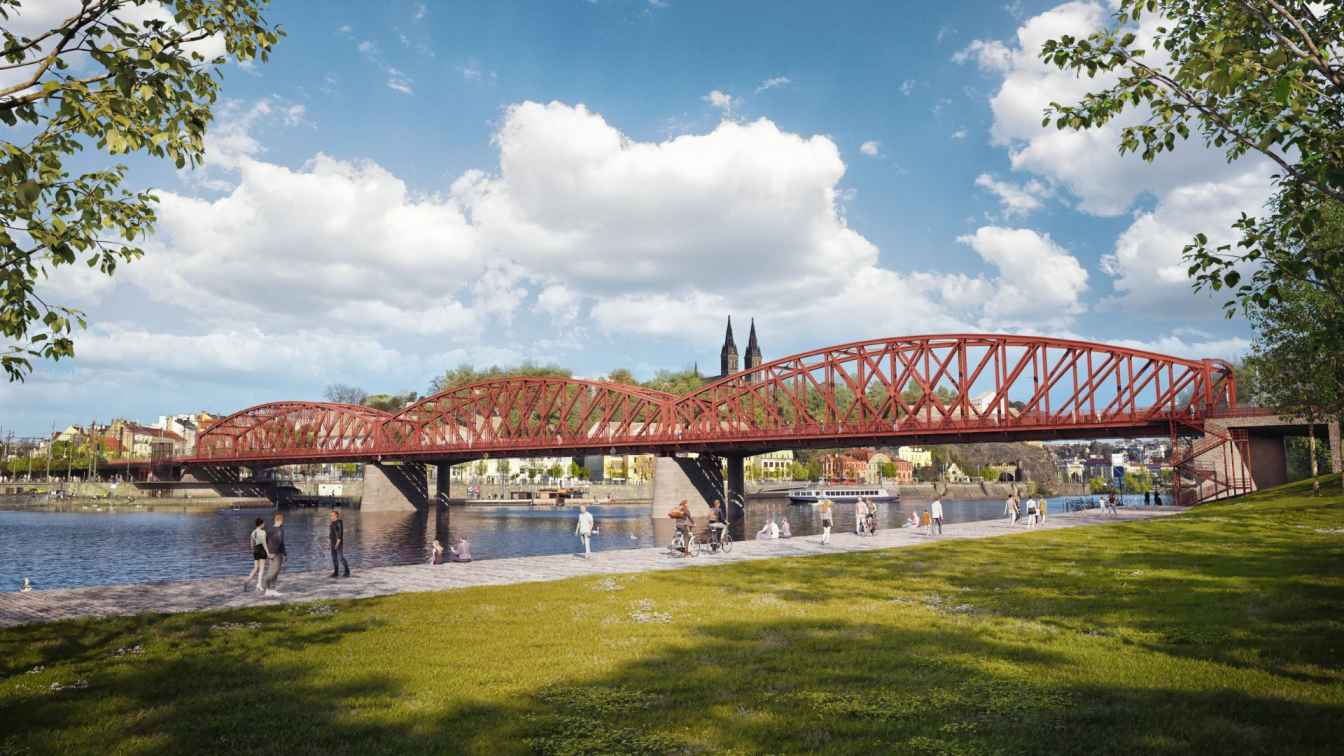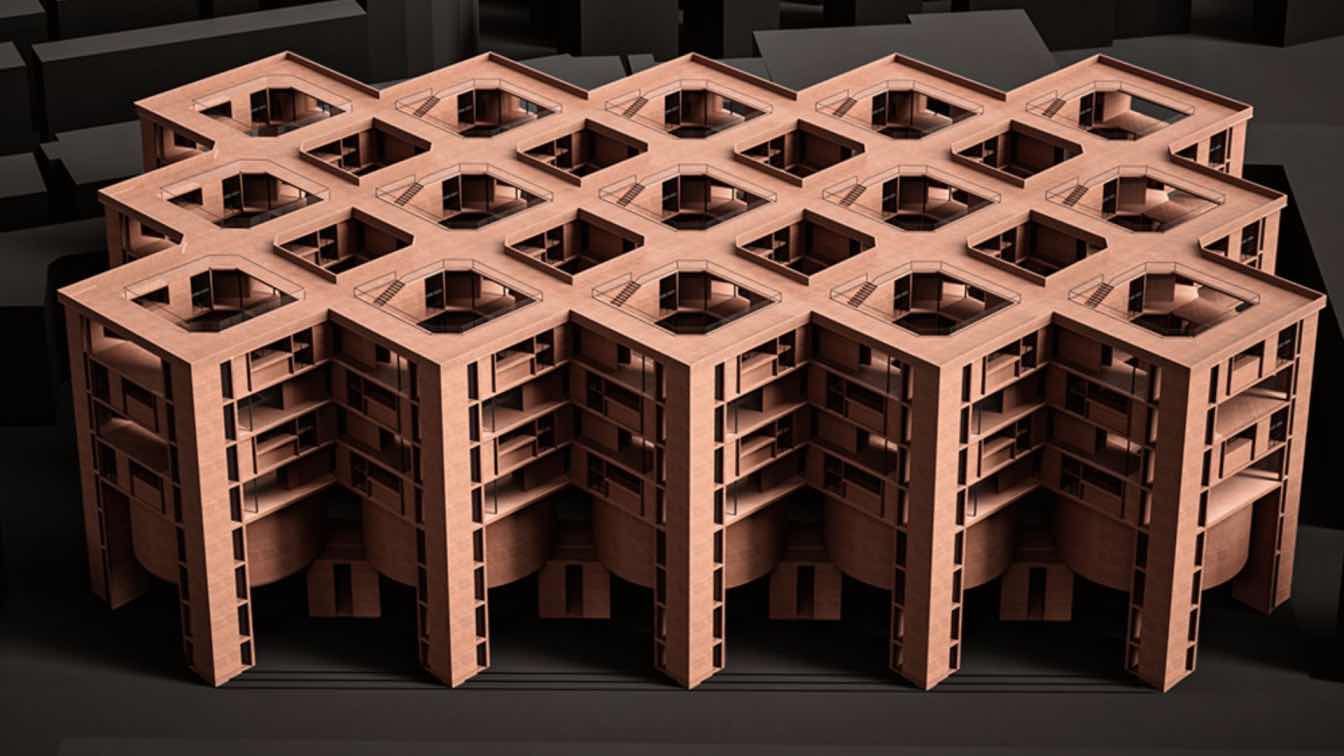Ian Firth [COWI] + Andreas Galmarini [WaltGalmarini]: The Vyšehrad Railway Bridge embodies the tension between heritage and progress, a dilemma faced by historic cities worldwide. As a vital infrastructural link and cultural landmark within Prague’s UNESCO-listed urban fabric, its proposed demolition has sparked debate. However, an independent coalition of experts presents a compelling alternative—one that integrates structural rehabilitation, sustainability, and urban regeneration. Their rigorous feasibility study, supported by leading international engineers, demonstrates that preservation is not only possible but advantageous, offering a model for cities navigating the intersection of modern infrastructure and historical continuity. The bridge is a state-protected monument. Reconstruction of the bridge also prevents the demolition to be the reason for UNESCO to place the entire Historic Center of Prague on the List of World Heritage in Danger. The project carries a strong story as the Czech state has not made the decision yet, and the possibility of the demolition of the structure, which is protected by law and by UNESCO, is still on the table. The project shows to what extent and to what expert level the grassroots activism grew to become a credible opponent for the plans of the government or the city.
Preserving the Vyšehrad Railway Bridge: A Model for Sustainable Urban Development
An independent coalition of experts presents a feasible and historically sensitive solution for one of Prague’s key infrastructural landmarks, which is an integral part of the Prague Heritage Reservation, a UNESCO-listed site.
Across the world, cities face a common dilemma: how to modernize vital infrastructure while preserving cultural heritage. The case of the Vyšehrad Railway Bridge in Prague exemplifies this challenge, but an innovative initiative led by independent experts, architects, and philanthropists offers a compelling solution—one that balances historical preservation, sustainability, and urban development. A meticulous feasibility study by world-renowned engineers presents a solution that not only preserves the historic bridge but also meets contemporary transportation demands through an efficient and cost-effective reconstruction plan.
Preservation of the Cultural Monument
Spanning the Vltava River since 1901 under the historic Vyšehrad Fortress, the Railway Bridge is more than a transportation link; it is a cultural landmark that contributes to Prague’s iconic skyline. The bridge is part of the railway infrastructure connecting Prague Main Station and Smíchov Station, which has been declared an immovable cultural monument and is an integral part of the Prague Heritage Reservation, a UNESCO-listed site. However, in recent years, debates have emerged over its future, with recent proposals advocating for demolition and replacement. In response, a coalition of professionals and citizens has demonstrated through a rigorous study that preservation and modernization can coexist. This debate echoes broader urban development dilemmas faced by heritage-rich cities worldwide: how to balance modernization with cultural responsibility.

Grassroots Urban Planning
Unlike traditional infrastructure projects spearheaded by state authorities or commercial developers, this initiative is driven by an independent coalition of experts and civic-minded philanthropists. The effort is led by the Vyšehrad Bridge Foundation, founded by philanthropist Tomáš Bistřický and experts including architects David Vávra, Petr Janda, and Petr Lešek, and supported by philanthropists Martin Vohánka and Jan Barta. The initiative aligns with growing global trends in grassroots urban planning, where local expertise and civic engagement drive meaningful change. While the foundation is composed of architects and engineers, their bottom-up approach mirrors the principles of grassroots activism: placing the needs of the city and its people at the center of urban development.
The Feasibility Study: A Smart Alternative to Demolition
The study was entrusted to the teams of world-renowned engineers Ian Firth (COWI, UK) and Andreas Galmarini (WaltGalmarini, Switzerland), whose expertise spans major restoration projects such as London’s Tower Bridge. Their involvement highlights the project’s technical rigor and international credibility. The project is locally coordinated by Petr Tej, the co-author of Prague‘s award-winning Štavnická Bridge (HolKa), alongside the architect and urbanist Marek Kopeć. The key findings include:
– Structural Rehabilitation: Only 15% of the bridge's material requires replacement, while 85% can be restored through modern anti-corrosion treatments.
– Long-Term Viability: The reconstructed bridge will have a lifespan of at least 100 years, rivaling that of a newly built structure.
– Minimal Urban Disruption: Unlike demolition and complete replacement, the reconstruction process minimizes the impact on Prague's railway traffic and the surrounding environment.
– Third Rail Expansion: The plan includes an additional third rail that blends harmoniously into the city’s panorama without compromising the bridge’s historic aesthetic.
As urban centers worldwide grapple with the competing demands of progress and preservation, the Vyšehrad Railway Bridge initiative offers an instructive case study. The study proves that historic structures can be adapted to meet modern demands without erasing their cultural value. The study has also already received a favorable assessment from the Swiss Federal Institute of Technology (ETH Zurich), a globally recognized authority in structural engineering. This university belongs among the TOP 10 in various global rankings and is frequently ranked as number 1 on the European continent.

Beyond the Bridge: Public Space and Community Activation
More than a transportation project, the initiative seeks to activate public space in the bridge’s surroundings. Plans include repurposing the currently unused vaults beneath the bridge’s land structure into cultural and community spaces. These interventions mirror successful urban revitalization projects in cities such as Berlin, London, and New York, where underutilized infrastructure has been transformed into vibrant public assets. For Prague citizens, this approach ensures that the bridge remains an integral part of their daily lives—not just as a transit route, but as a space for community engagement and urban enjoyment.
UNESCO/ICOMOS Endorsement of Preservation Efforts
In April 2024, a joint UNESCO/ICOMOS Advisory Mission released an official Report on the Vyšehrad Railway Bridge and its significance within the Historic Centre of Prague World Heritage property. The mission confirmed that the bridge contributes to the site’s Outstanding Universal Value and stated unequivocally that demolition and replacement would cause unacceptable harm to its authenticity and integrity Crucially, the mission recommended preserving and rehabilitating the existing structure—directly aligning with the proposal put forward by the Vyšehrad Bridge Foundation. It also welcomed the initiative by independent experts and civil society to provide alternative technical assessments supporting its conservation.
A Vision for the Future of Prague—and Other Global Cities
The case of the Vyšehrad Railway Bridge extends beyond Prague. It underscores a pressing question faced by many historic cities: how to reconcile infrastructure growth with heritage conservation. The approach taken here offers a replicable model for sustainable urban development, demonstrating that historical preservation need not come at the expense of modern progress. As the Foundation moves forward in its efforts to preserve the bridge, its message is clear: the smartest cities are those that innovate while respecting their past. By choosing reconstruction over demolition, Prague has the opportunity to lead by example, proving that historical infrastructure can be adapted to meet the needs of future generations without losing its identity.

Additional information
Engineering Solutions
The proposed plan includes a step-by-step approach to reconstruction that ensures uninterrupted railway operations throughout the project. Key elements include:
– Modular Restoration: Each of the bridge’s three steel-truss spans would be temporarily removed, transported to a shore-based facility for restoration, and replaced sequentially. Temporary structures would maintain continuous train service during repairs. This modular approach not only allows for efficient work on each segment but also minimizes disruption to the surrounding urban environment. Special transport mechanisms would be employed to move the spans safely, using self-propelled modular transporters (SPMTs) on floating pontoons to streamline logistics. The project for the demolition of the bridge and the building of the new structure includes almost three years of railway transport closure.
– Structural Reinforcement: Advanced anti-corrosion treatments, replacement of critical steel elements, and enhanced load-bearing capacity would bring the bridge in line with modern railway safety requirements and optimize durability while maintaining the original design aesthetic. State-of-the-art coatings resistant to weathering and pollution would be implemented, ensuring long-term protection against degradation.

– Sustainable and Low-Impact Construction: The project would require three times less building material compared to a full replacement, significantly reducing the environmental impact and disruption to the city. Furthermore, the repurposed steel from removed components would be recycled, aligning with the European Union’s sustainability goals. Implemented construction techniques emphasize precision engineering, limiting emissions, noise pollution, and resource waste while maintaining the integrity of the historic structure.
Enhancing Prague’s Urban Connectivity and Environment
The plan also includes the strategic addition of a third railway track, seamlessly integrated with the existing structure through a lightweight, minimally invasive steel framework. This additional capacity would alleviate congestion and improve transit efficiency. The integration of modern noise-dampening materials would further enhance the experience of passengers and nearby residents by reducing rail-generated sound levels. Moreover, the proposal incorporates significant urbanistic improvements. The revitalization of the bridge surroundings, particularly in the Výtoň and Smíchov districts, would enhance public spaces, create new commercial opportunities, and better integrate the area into the city’s broader transport network. A newly designed railway station at Vyšehrad would further elevate Prague’s rail infrastructure, however, the project also allows the possibility of the Výtoň station as currently proposed by the Czech state and the City of Prague. The new station would blend modern functionality with heritage aesthetics, incorporating elements that pay homage to Prague’s architectural legacy while providing state-of-the-art transit facilities.






















About studio / author
Philanthropists of the Vyšehrad Railway Bridge Foundation
Martin Vohánka comes from a family of railway professionals. He is the founder and CEO of Eurowag, a leading European mobility tech company. A major philanthropist, he co-founded the Independent Journalism Fund and the BLÍŽKSOBĚ Foundation and actively supports education and social causes.
Tomáš Bistřický is a Czech entrepreneur and philanthropist. He co-founded Toma, a successful beverage brand, and later shifted his focus to supporting projects in architecture, cultural heritage, and environmental conservation.
Jan Barta, a businessman and investor, has a deep-rooted passion for railway heritage, tracing back to his ancestor, František Křižík, a pioneer of railway electrification in Austria-Hungary. As a co-owner of investment firm Pale Fire Capital, he supports research projects and educational initiatives.
Vyšehrad Railway Bridge Foundation Managment
Petr Janda is an architect and artist known for significant projects in the Czech Republic and abroad. His acclaimed revitalization of Prague’s riverfront transformed historic vaults into cultural and social spaces. His work includes floating baths, the Riegrovy Baths in Prague, and projects in Abu Dhabi and Norway.
Petr Lešek is an architect and a board member of the Czech Chamber of Architects. He specializes in public procurement, sustainability, and affordable housing. His firm, Projektil, has won prestigious awards for projects like the Hradec Králové Research Library and the National Technical Library in Prague.
David Vávra is an architect and cultural figure, widely known as the host of the documentary series Šumná města (Picturesque Cities). His work focuses on Prague’s architectural heritage, with key projects including the renovation of the Dobeška Cultural Center and Švanda Theatre, as well as the revitalization of former industrial sites.
Bridge Engineering Experts and Feasibility Study Authors
Ian Firth is one of the world’s leading bridge designers, with over 45 years of experience. His portfolio includes landmark projects such as the Messina Bridge (Italy) and Stonecutters Bridge (Hong Kong), as well as the restoration of historic structures like Wye Bridge and Clifton Suspension Bridge. A former president of the Institution of Structural Engineers, he advocates for high-quality, elegant infrastructure design.
COWI is a global engineering consultancy based in Copenhagen, specializing in large-scale bridge projects, including some of the world’s longest-span bridges. The company employs around 8,000 professionals and generates over €1 billion in revenue.
Andreas Galmarini is a structural engineer with over 20 years of expertise in bridge design, rehabilitation, and seismic protection. His projects include the Busan-Goje Fixed Link in South Korea and the award-winning Hinterrhein bridges in Switzerland. He is a partner at WaltGalmarini and lectures at Swiss universities.
WaltGalmarini is a leading Swiss engineering firm known for innovative solutions in complex structural design, including high-rise and long-span bridges, as well as the restoration of historic structures.
Petr Tej is an architect and bridge engineer specializing in innovative footbridges and bridge structures. His projects range from small-scale footbridges to large urban infrastructure, often in collaboration with leading Czech and international studios. He is known for his use of ultra-high-performance concrete (UHPC), notably in the award-winning Štvanická Footbridge in Prague, which connects Holešovice and Karlín.
Marek Kopeć is an architect and urban planner specializing in public spaces and innovative housing models. He led the Projects and Competitions Office at the Prague Institute of Planning and Development (IPR). At IPR, he oversaw key urban projects, including the revitalization of Vítězné Square, the Štvanická Footbridge, and the design of Prague’s new street furniture. He also co-authored the Letenský Cross project and curated the exhibition Baugruppe ist super!, exploring alternative housing concepts.





